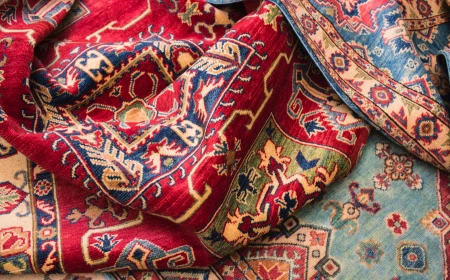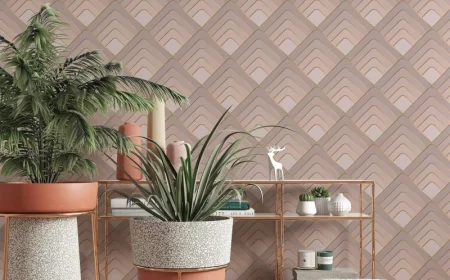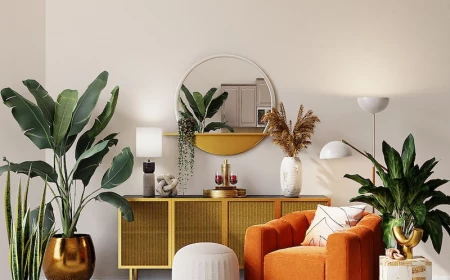Engineered Wood Flooring: A No-Nonsense Guide from the Trenches
I’ve spent more years than I can count on my knees, installing wood floors. I’ve seen it all, from classic solid oak in old homes to fancy exotic woods that cost a fortune. But honestly, the one product that really shook things up for us pros is engineered wood flooring.
In this article
When it first showed up, a lot of us in the trade were pretty skeptical. We kind of looked down on it, thinking it was a cheap knockoff of the real thing. Man, were we wrong. It’s not a lesser version of solid wood; it’s just a different beast altogether. It’s a brilliant solution for situations where solid wood would be a complete disaster.
I’ll never forget this one job in a beautiful lakeside home. The owners were dead-set on having wide-plank hickory in their newly finished basement. I had to be the bearer of bad news and explain that putting solid wood in a damp, below-grade space is basically asking for trouble. The planks would cup and warp within a year. They were gutted, until I showed them a top-notch engineered hickory. It had the same gorgeous look, a super thick top layer of real wood, and was built for that environment. We put it in, and that floor still looks amazing many years later. That’s the magic of using the right material for the job.
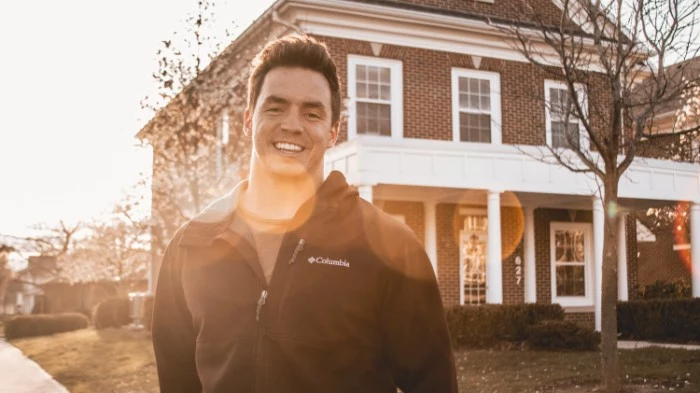
So, What’s Really Inside an Engineered Plank?
To get why engineered wood works so well, you have to look at how it’s put together. It’s not just a sliver of wood slapped on top of some plywood. It’s a layered system designed for one thing: stability.
1. The Wear Layer: The Part You Actually See and Live On
This top layer is 100% real hardwood, and its thickness is probably the most important factor in how long your floor will last. A cheap plank might have a paper-thin layer, maybe 1mm or less, which means you can never, ever refinish it. But a quality plank? You’re looking at a wear layer between 3mm and 6mm thick. A 4mm layer, for example, gives you enough meat to sand and refinish the floor two or three times, just like you could with a traditional solid wood floor. Oh yeah, and the price reflects this directly. A floor with a thin 1.5mm wear layer might run you $3 to $5 per square foot. But jumping to a premium 4mm+ floor will likely put you in the $8 to $12 per square foot range. It’s a classic “you get what you pay for” scenario.
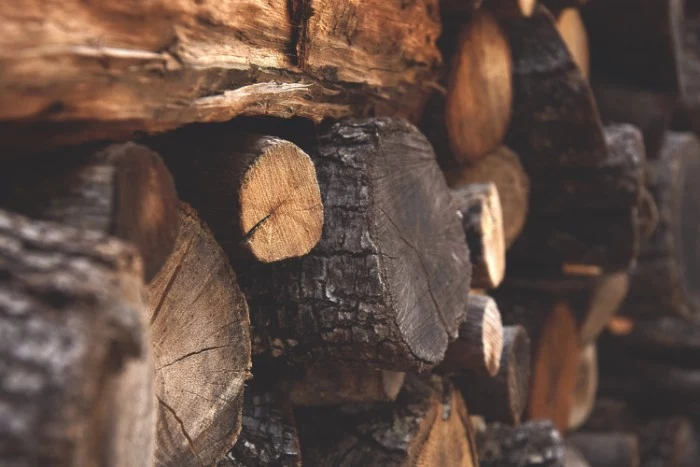
By the way, how they cut this layer matters, too. A “sawn cut” looks identical to solid wood and is found on the best planks. A “rotary peel” is what you see on the budget-friendly stuff; it’s efficient but can have a strange, wide grain pattern.
2. The Core: The Unsung Hero of Stability
Here’s where the magic happens. The core is what fights against moisture and temperature swings that make solid wood go haywire. It’s made of multiple layers of wood (or a composite) glued together with the grain of each layer running at a 90-degree angle to the one above and below it. This cross-graining geniusly forces the layers to hold each other in place, preventing warping and cupping.
You’ll usually see two types of cores:
- Plywood Core: The classic choice. A 5-ply core or higher is what I usually recommend for its excellent stability, especially if you’re nailing it down.
- High-Density Fiberboard (HDF) Core: This stuff is super dense and stable, making it perfect for the precise milling needed for click-lock floating floors. Heads up, though: if water gets past the finish and soaks the HDF, it can swell up permanently.
3. The Backing Layer: The Foundation
This bottom layer is all about balance. It’s a thin slice of wood that counteracts the forces on the top wear layer, keeping the whole plank straight and true.

The Real Work: Nailing the Installation
You can buy the most expensive flooring in the world, but if the installation is sloppy, it’s going to fail. I often spend half my time on a job just getting the subfloor ready. It is, without a doubt, the most important part of the whole process.
Subfloor Prep is Not Optional
Your subfloor has to be three things: clean, dry, and flat. No ifs, ands, or buts.
- Clean: Scrape off all that old paint, drywall mud, or glue. Then sweep and vacuum like you mean it. Any little bump can cause a problem down the line.
- Dry: Moisture is your floor’s mortal enemy. For concrete, pros use fancy meters. But for a DIY check, you can do the “plastic square test.” Just tape a 2×2 foot piece of plastic sheeting to the concrete, sealing all four edges. Wait 24-48 hours. If you see condensation under the plastic or the concrete looks darker, you have a moisture issue that needs to be addressed before you do anything else.
- Flat: This is a big one. The industry standard is a floor that doesn’t have any dips or humps of more than 3/16 of an inch over a 10-foot span. I use a long straightedge to find high and low spots, grinding down the highs and filling the lows with a self-leveling compound. It’s tedious, but skipping this is a recipe for a bouncy, creaky floor.

Choosing Your Installation Path: Floating vs. Glue vs. Nails
Okay, let’s break down the three ways these floors go in. They each have their pros and cons, and the right choice depends on your subfloor and your budget.
The Floating Floor: This is the most common for DIYers. The planks click together and “float” as one big slab over an underlayment. They aren’t attached to the subfloor at all. It’s fast and clean, but can sometimes feel a bit hollow underfoot. A good quality acoustic underlayment is a must to cut down on that clicky sound. For a DIYer, you’ll need a basic tool kit: a tapping block, pull bar, spacers, and a saw (a miter saw is great, but a jigsaw can work in a pinch). If you hire a pro, expect to pay around $3 to $4 per square foot for this type of installation.
The Glue-Down Method: This is my personal favorite for a rock-solid feel, especially over concrete. The planks are glued directly to the subfloor. It feels and sounds just like a traditional solid floor. The downside? It’s messy, expensive, and incredibly unforgiving for a beginner. The specialty adhesives are no joke—they’re incredibly strong and hard to clean up. A 3.5-gallon bucket of good adhesive can cost $150 to $250 and won’t cover a huge area. This is a job for the pros, and you should budget $5 to $7 per square foot for their labor.
The Nail-Down or Staple-Down Method: This is the old-school way, used only on wooden subfloors. A special flooring nailer drives fasteners through the tongue of the plank. It’s fast, secure, and clean. But it requires an expensive pneumatic tool and an air compressor. This is also a pro-level job, usually costing $4 to $6 per square foot for labor.
Quick Design Tip: To make a room feel bigger and more open, run the planks parallel to the longest wall. Another great trick is to run them towards the main light source, like a big window. It just makes the whole space feel more natural.
Don’t Forget These Crucial Steps!
Acclimation is King: Wood breathes. It needs to get used to your home’s unique temperature and humidity before you install it. Bring the unopened boxes into the room where they’ll be installed and let them sit for at least 72 hours. I like to open the ends of the boxes to help the air circulate. Skipping this can lead to massive gaps in the winter or buckling in the summer.
The 10% Rule: This is a classic rookie mistake. Always, and I mean ALWAYS, buy about 10% more flooring than your room’s square footage. This extra material accounts for cuts, mistakes, and the odd bad board you might find. There is nothing worse than running out of flooring with just one row left to go.
Top 5 Rookie Mistakes I See All the Time
I’ve been called in to fix a lot of DIY jobs gone wrong. To be frank, it’s usually one of these five things:
- Ignoring the Subfloor: Thinking you can just lay a new floor over an uneven or dirty subfloor. You can’t. Prep is everything.
- Skipping Acclimation: Rushing the job and installing the wood straight from the store. The wood will move later, I guarantee it.
- Forgetting the Expansion Gap: You have to leave a gap (about the width of a flooring plank) around the entire edge of the room. The floor needs space to expand. Your baseboards will hide it.
- Using the Wrong Trowel: For a glue-down job, the adhesive bucket tells you exactly what size and shape of trowel to use. Using the wrong one means too much or too little glue.
- Not Buying Enough Flooring: Underestimating cuts and coming up short. See the 10% rule above!
A Few Final Words of Advice
Where you live matters. In a super humid place like Florida, a glue-down installation with a moisture-barrier adhesive is your best bet. In a dry climate like Arizona, a whole-house humidifier is almost mandatory to keep the wood from shrinking and gapping.
And when it comes to long-term care, remember that factory finishes with aluminum oxide are incredibly tough but hard to spot-repair. An oil finish looks more natural and is easy to touch up, but it needs more maintenance. If you have a quality floor with a thick wear layer (over 2mm), you can refinish it, but make sure you hire someone who knows how to handle engineered wood—it requires a much lighter touch than solid flooring.
Finally, a word on safety. Cutting wood creates fine dust, so please wear a good mask. And always look for flooring with a FloorScore or similar certification. This ensures it has low VOCs and won’t off-gas harmful chemicals into your home.
Engineered wood is a fantastic product. If you do your homework, prepare properly, and respect the process, you’ll end up with a beautiful, stable floor that will serve you well for decades. Good luck!
Inspirational Gallery
An engineered plank’s cross-grain construction makes it significantly more dimensionally stable than its solid wood counterpart, resisting expansion and contraction with changes in humidity.
In real-world terms, this means less gapping between boards in dry winter months and a much lower risk of cupping or buckling in humid summer weather, especially in kitchens or open-plan living spaces.
Can you really put engineered wood in a kitchen or a powder room?
Absolutely, and it’s often a better choice than solid wood here. The key is a quality product and a professional installation. Look for brands with robust, water-resistant finishes, like the polyurethane and aluminum oxide coatings used by manufacturers such as Bruce or Shaw. While you still need to wipe up spills promptly, a well-made engineered floor can handle the daily traffic and occasional splashes of a busy kitchen beautifully.
Floating Floor: Planks click together and “float” over an underlayment without being fixed to the subfloor. It’s faster, less expensive to install, and more DIY-friendly.
Glue-Down Floor: Planks are adhered directly to the subfloor with a specialized adhesive. This method feels more solid underfoot, is quieter, and is the preferred method for installations over concrete slabs.
The right choice depends on your subfloor, budget, and desired feel.
Don’t just look at the color; consider the finish, as it completely changes the floor’s character and maintenance routine.
- Matte/Ultra-Matte: Trendy and natural-looking, it excels at hiding minor scratches and dust. Perfect for busy homes with kids or pets.
- Satin: The timeless classic. It offers a soft, subtle sheen that highlights the wood’s grain without being overly reflective.
- Oil-Based Finish: Penetrates the wood for a rich, raw look. It’s easier to spot-repair but typically requires more periodic maintenance with special care products.
The Acclimation Rule is Non-Negotiable: I’ve seen homeowners eager to start their project open the boxes and begin laying planks the moment they arrive. This is a critical mistake. Your new engineered flooring needs to sit in the room where it will be installed for at least 48-72 hours. This allows the wood to adjust to your home’s specific temperature and humidity levels, preventing major issues with expansion or contraction after installation.
- It makes small scratches and dents nearly invisible.
- It gives the floor a subtle, rustic texture that feels great under bare feet.
- It enhances the natural grain patterns of woods like oak and hickory.
The secret? A wire-brushed finish. During manufacturing, the softest part of the wood grain is gently brushed away, leaving behind the harder wood and a beautifully textured, more durable surface.
Engineered wood flooring typically uses 3 to 4 times less of a specific hardwood species than solid wood flooring to cover the same square footage.
This is a huge win for sustainability. The core layers are made from fast-growing, often more renewable woods like eucalyptus or birch. This allows a single, precious oak or walnut tree to go much further, giving you the beautiful look of an exotic or slow-growth species with a smaller environmental footprint.
The trend is moving towards wider and longer planks for a more expansive, high-end look. While solid wood planks wider than 5 inches are notoriously prone to warping, engineered construction makes it possible to have stable planks of 7, 9, or even 11 inches. Brands like Carlisle Wide Plank Floors or the luxury lines from Kahrs are masters of this craft, offering dramatic visual impact that can make any room feel larger and more luxurious.
Think beyond the floor’s wear layer; consider its core. While the hardwood top is what you see, the core is the floor’s engine. A high-density fiberboard (HDF) core, like those used by Pergo or COREtec, offers superior dent resistance and stability, making it an excellent choice for high-traffic areas or homes with heavy furniture. A standard plywood core is also excellent and often preferred by purists for its all-wood construction.
Before you buy, grab a sample plank and give it a quick hands-on test. Try scratching the surface firmly with a car key to gauge the durability of the finish. Check the plank’s edges: are the layers clean and tightly bonded, or can you see gaps? A quality sample from a reputable brand like Mercier or Lauzon will feel solid, dense, and difficult to damage.
